

The 1930’s would find the United States Army Air Corps short of funding and mired in the obsolete doctrine of a two seat pursuit aircraft. Thanks to some clever parlance and dogged determination, Lt. Ben Kelsey arranged for an Army Air Corps “Circular” proposing a new category of airplane known as an “Interceptor”. In an attempt to do an “end-run” around official doctrine, the concept was to develop a higher performance, single seat, cannon armed fighter equipped with a tricycle landing gear. Working overtime out of a leaky old farmhouse in Burbank, California, Kelly Johnson, Hall Hibbard, and their team drew up the design for the Model 22 that would eventually become the P-38.

The design would prove to be complicated and pushed the boundaries of technology at the time. Development was slow and the first actual “production” aircraft would not appear until the P-38D. The first P-38 to be considered “combat ready” was the P-38E. In the meantime, the Air Corp was wondering what to do with the P-38. Despite turbocharging the Allison V1710’s, the high altitude performance was unsatisfactory making the P-38 unsuitable for operations in the European Theatre. At the same time, the Army Air Corps was looking for a suitable platform for aerial reconnaissance. The P-38 offered a perfect stable platform, long range and large bay to accommodate an array of camera installations. Indeed, the P-38 would become the premier aerial reconnaissance aircraft in the US arsenal. Over the D-Day beaches, in their stripped down form, at operational altitudes, the F-5’s could easily outpace their P-51 escorts.


| Model | Built | Serial # | Date | |
|---|---|---|---|---|
| P-38E | ||||
| F-4-1-LO | 2 | 41-2098 ---- 41-2099 | Mar 42 | |
| 36 | 41-2121 --- 41-2156 | Mar 42 - May 42 | ||
| 14 | 41-2158 --- 41-2171 | April 42 - June 42 | ||
| 46 | 41-2173 --- 41-2218 | May 42 - Aug 42 | ||
| 1 | 41-2220 | Aug 42 | ||
| F-5-2-LO | 1 | 41-2157 | July 42 | |
| P-38F | ||||
| F-4A-1-LO | 20 | 41-2362 --- 41-2381 | Aug 42 | |
| P-38G | ||||
| F-5A-1-LO | 20 | 42-12667 --- 42-12686 | Aug 42 - Dec 42 | |
| F-5A-3-LO | 20 | 42-12767 --- 42-12786 | Oct 42 | |
| F-5A-10-LO | 20 | 42-12967 --- 42-12986 | Nov 42 - Jan 43 | |
| F-5A-10-LO | 60 | 42-13067 --- 42-13126 | Dec 42 - Jan 43 | |
| F-5A-10-LO | 60 | 42-13267 --- 42-13326 | Mar 43 | |
| P-38J | ||||
| F-5B-1-LO | 90 | 42-67312 --- 42-67401 | Sept 43 - Oct 43 | |
| F-5B-1-LO | 110 | 42-68192 --- 42-68301 | Dec 43 - Jan 44 | |
| Total | 500 | |||
| Modification Center Conversions and Special USAAF Modifications | ||||
| P-38J | F-5C-1-LO | 123 | ||
| P-38J-15 | F-5E-2-LO | 100 | ||
| P-38J-25 | F-5E-3-LO | 105 | ||
| P-38L | F-5E-4-LO | 500 | ||
| F-5B-1 | F-5F | 1 | 42-68220 | |
| P-38L-5 | F-5F-3-LO | (Unk.) | ||
| P-38L-5 | F-5G-6-LO | 63 | ||
| Total | (>892) | |||

The F-4’s were the only variant designed from the outset for photo reconnaissance. Based on the P-38E airframe, they were given the Lockheed model number 222-62-13 and were the only photo recon variant built by Lockheed in Burbank. The F-4 was the first P-38 that could carry two external fuel tanks. Initially designed for only two vertically mounted K-17 cameras, most were seen with the same two additional oblique K-17 mounts found on the F-4A’s. There were also a few F-4’s that retained the two uppermost 0.50 cal machine guns.

The F-4A’s were modifications of a P-38F. There were only 20 modified (41-2362 --- 41-2381). Outwardly indistinguishable from an F-4 with oblique mounted cameras. It is important to check aircraft serial numbers because the F-4 and F-4a are often incorrectly identified in photographs. Frequently, the numbers seen on the nose are the last two digits of the aircraft serial number, so it would more than likely be 62 – 81.
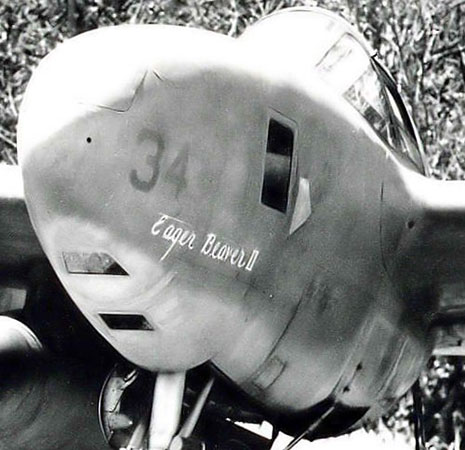
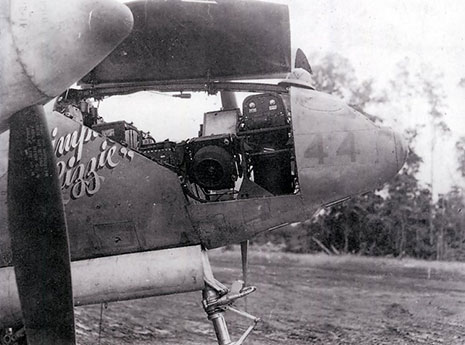

There was only one F-5 produced based on the P-38E. The F-5A’s were modifications of late production P-38G’s. The F-5B used the same modification on the P-38J airframe. The F-5C used the same camera arrangement with a improved installation. The F-5 camera arrangement could be configured differently with a mixture of K-17 and K-18 cameras in various focal lengths.





The F-5E was a modification of the P-38J and P-38L airframes. They differed from the F-5B by having prominently bulged oblique ports. The F-5E usually carried a mixture of K-17 and K-22 cameras.
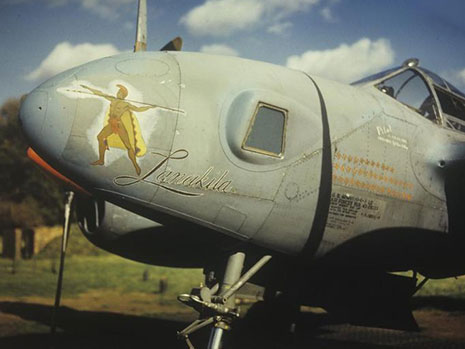


The single F-5F was a modification of an F-5B-1. The F-5F-3 used the P-38L-5 airframe. It had extended lower camera bays and repositioned oblique camera ports. The modifications were done at Dallas. It is unknown how many conversions were done.



The F-5G was a conversion of the P-38L-5. The nose was completely reshaped and housed four standard cameras plus a forward oblique camera in the nose cap.
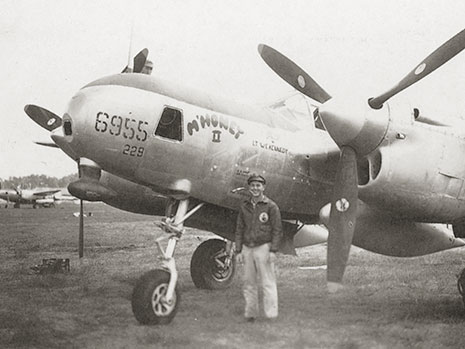
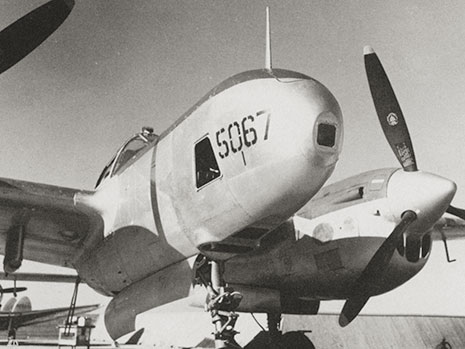
The K-17 was a 9" x 9" format (negative size) mapping and reconnaissance camera. It had three major components: a body, containing most of the mechanics and controls; a detachable magazine for 9 1/2" wide roll film; and a lens cone, with 6", 12", or 24" focal length options. The K-17, like the K-18 was developed and built by the Fairchild Camera and Instrument Company.
The K-18 reconnaissance camera differed markedly from the K-17 in construction. The K-18 body and lens cone were built as a single unit housing a 24" focal length lens. Film format was 9" x 18".
Both of these cameras were normally operated from a 24 VDC electrical source, but could be manually operated by a hand crank and shutter lever. Both were fitted with a connector for an intervalometer that fired the camera at an interval set by the aerial photographer. All used a vacuum applied to the film magazine to flatten the film surface before each exposure.
While these cameras were normally clamped into mounts, a pair of handles and a viewfinder could be fitted to K-17's and K-18's for hand-held operation. What "hand-held" meant is subject to interpretation, as these cameras were not lightweights. With a 200 foot roll of film, the A-5 film magazine used with the K-17 weighed 30 pounds. A complete K-17 with 12" lens cone and a full magazine weighed about 55 pounds. With a 24" lens instead of the 12", the weight climbed to near 75 pounds.
Both of these cameras used 9 1/2" wide Eastman Aerial Safety film. Film emulsions were Class L and Class N. Class L was the "normal" high-speed panchromatic film. The common lengths of film rolls were 200 feet and 75 feet. (Two hundred feet was the maximum film load for an A-5 or A-5A magazine. The A-7 magazines used with K-18 cameras held a maximum of 75 feet).




Rather than using the ill-fitting F-4 CMK conversion, I decided to take a more direct approach and make the necessary modifications directly to the Tamiya P-38F/G kit. Conversion starts with cutting in a panel and fitting in a piece of tinted acrylic, Fig.1.
A flat area was created in the bottom of the nose and a piece of tinted acrylic was cemented in place. Two pieces of sheet styrene were cemented on top of the acrylic and the area was rough sanded to shape, Fig.2.


A scribing template for the nose detail was made from vacuum formed styrene, Fig.3.
The acrylic panels were sanded to match the nose contour. The gun ports and ejection chutes have been filled in. A coat of black primer was applied and sanded out. The canopy was cemented in place and ready for paint, Fig.4.
A detailed step by step of this build is presented in the video shown below.






Stanaway, John and Rocker, Bob. The Eightballers: Eyes of the Fifth Air Force. Atglen: Schiffer Military, 1999
Bodie, Warren M. The Lockheed P-38 Lightning. Hiawassee: Widewing Publications, 1991
Hagan, Klaus and Kinzey, Bert. Lockheed P-38 Lightning, Part 1. Las Vegas: Detail & Scale, 2024
Hagan, Klaus and Kinzey, Bert. Lockheed P-38 Lightning, Part 2. Las Vegas: Detail & Scale, 2024
Scutts, Jerry. Lockheed P-38 Lightning: Part 1. Wilshire: The Crowood Press, 2006
Ethel, Jeffrey L. and Watenabe, Riyku. P-38 Lightning. New York: Crown Publications, 1991
Stanaway, John and Hickey, Lawrence. Attack & Conquer: The 8th Fighter Group in World War II. Atglen: Schiffer Military, 1995
Aero Detail 28 Production Team. Lockheed P-38 Lightning. Tokyo: Dainippon Kaiga Co, 2000
Stafford, Gene. P-38 Lightning in Action. Carrollton: Squadron Signal, 1976
Davis, Larry. P-38 Lightning in Action. Carrollton: Squadron Signal, 1990
Doyle, David. P-38 Lightning in Action. Carrollton: Squadron Signal, 2017
O'Leary, Michael. USAAF Fighters of World War Two in Action. Poolen, New York, Sydney: Blandford Press, 1986
Doyle, David. P-38 Lightning, Vol. 1 Legends of Warfare. Atglen, PA: Schiffer Military, 2019
Doyle, David. P-38 Lightning, Vol. 2 Legends of Warfare. Atglen, PA: Schiffer Military, 2019
Green, William and Swanborough, Gordon. The US Army Air Force Fighters Part 2. New York: Arco Publishing Co, 1978
Maloney, Edward. Lockheed P-38 Lightning. Fallbrook: Aero Publishers, 1968
Gurney, Gene. P-38 Lightning. New York: Arco Publishing, Inc., 1979
McDowell, Ernest R. and Ward, Richard. Lockheed P-38 Lightning. London: Osprey Publishing Ltd, 1968
Famous Airplanes of the World No.106, February,2,1979. Lockheed P-38 Lightning. Bunrin-Do, 1979



